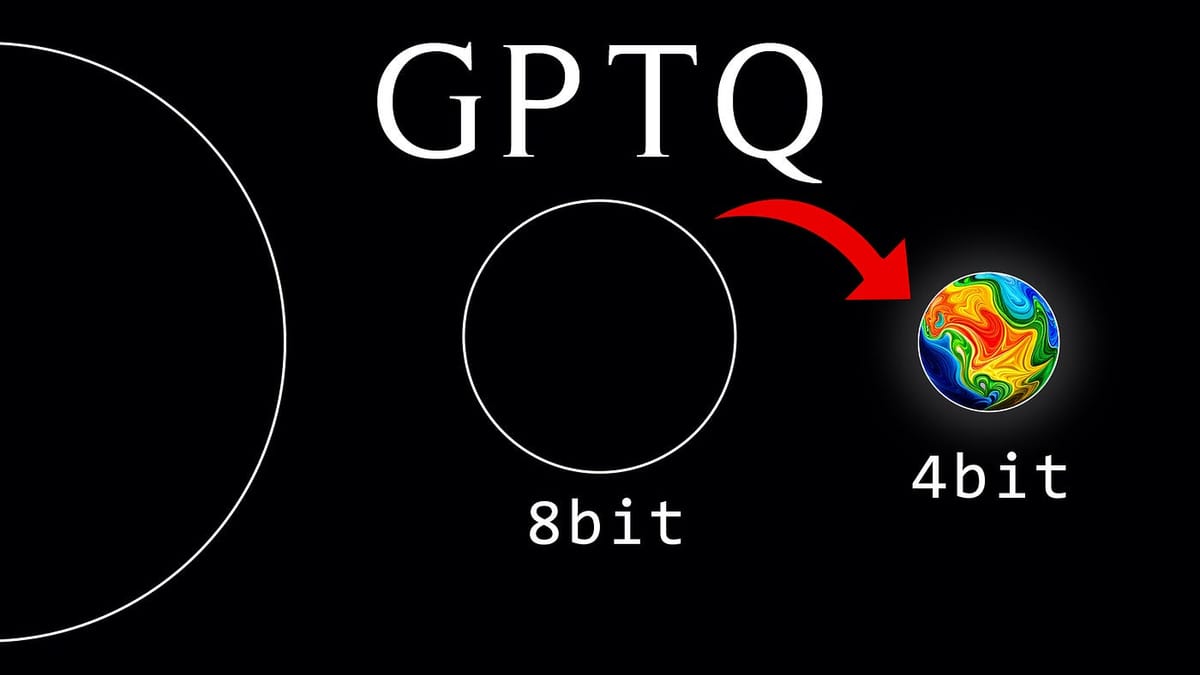4-Bit Quantization: Understanding the Basics
Quantization is a fundamental concept in digital signal processing that involves reducing the precision of a signal. It is commonly used in various applications such as image and audio compression

Introduction
Quantization is a fundamental concept in digital signal processing that involves reducing the precision of a signal. It is commonly used in various applications such as image and audio compression, where reducing the number of bits required to represent the signal can significantly reduce storage requirements and processing complexity. In this article, we will explore the concept of 4-bit quantization, its benefits, limitations, and delve into some technical details.
What is Quantization?
Quantization is the process of mapping a continuous range of values to a finite set of discrete values. In the context of digital signal processing, quantization involves dividing the continuous range of values into a fixed number of levels and representing each level using a specific bit pattern. The number of levels determines the precision of the quantized signal, with a higher number of levels resulting in a higher precision representation.
4-Bit Quantization
4-bit quantization is a specific type of quantization that uses 4 bits to represent the quantized signal. This means that the continuous range of values is divided into 16 levels, and each level is represented by a unique 4-bit pattern. The 4 bits can take on 2^4 = 16 different combinations, allowing for the representation of 16 distinct levels.
To illustrate this, let's consider an example of quantizing an audio signal. Suppose we have an audio signal with a dynamic range of -1 to 1. With 4-bit quantization, we divide this range into 16 equal intervals, each representing a different level. The 4-bit patterns from 0000 to 1111 are assigned to these levels, with 0000 representing the lowest level and 1111 representing the highest level.
When quantizing the audio signal, each sample is rounded to the nearest quantization level. For example, if the original sample value is 0.3, it would be rounded to the nearest quantization level, which in this case might be 0.25. The 4-bit pattern assigned to the 0.25 level would then be used to represent this quantized sample.
Benefits of 4-Bit Quantization
Reduced Storage Requirements
One of the main benefits of 4-bit quantization is its ability to significantly reduce storage requirements compared to higher bit quantization schemes. By using only 4 bits to represent the signal, the amount of memory required to store the quantized signal is reduced by a factor of 4 compared to 8-bit quantization and by a factor of 16 compared to 16-bit quantization. This reduction in storage requirements can be particularly advantageous in applications where memory is limited or expensive.
Lower Processing Complexity
Another advantage of 4-bit quantization is its lower processing complexity compared to higher bit quantization schemes. With fewer bits to process, computations involving the quantized signal can be performed more quickly and with lower computational resources. This can be especially beneficial in real-time applications where low latency is critical, such as audio and video streaming.
Improved Compression Efficiency
4-bit quantization can also lead to improved compression efficiency in certain scenarios. By reducing the number of bits required to represent the signal, the resulting quantized signal can be more easily compressed using lossless or lossy compression algorithms. This can result in higher compression ratios and better overall compression performance.
Limitations of 4-Bit Quantization
While 4-bit quantization offers several benefits, it is important to consider its limitations as well.
Reduced Dynamic Range
One limitation of 4-bit quantization is its reduced dynamic range compared to higher bit quantization schemes. With only 16 levels available, the quantized signal can only represent a limited range of values. This can lead to a loss of detail and accuracy in the representation of the original signal, particularly for signals with a wide dynamic range.
For example, in the case of audio signals, a 4-bit quantized representation may not capture the subtle nuances present in high-fidelity recordings. The limited dynamic range can result in a loss of fine details and introduce quantization noise, leading to a degradation in audio quality.
Increased Quantization Error
Another limitation of 4-bit quantization is the increased quantization error compared to higher bit quantization schemes. Quantization error refers to the difference between the original signal and its quantized representation. With fewer levels available, the quantization error tends to be larger, resulting in a lower signal-to-noise ratio and potentially introducing audible or visible artifacts in the reconstructed signal.
For example, when quantizing an image, a 4-bit representation may introduce noticeable blocky artifacts, especially in areas with subtle color gradients. These artifacts arise due to the limited number of levels available to represent the image's color information accurately.
Limited Applications
Finally, 4-bit quantization may not be suitable for all applications. Certain applications, such as high-fidelity audio or medical imaging, require a higher level of precision and dynamic range that cannot be adequately represented with only 4 bits. In these cases, higher bit quantization schemes are typically preferred.
For instance, in medical imaging, a 4-bit quantized representation may not provide sufficient accuracy for diagnostic purposes. The limited precision could lead to the loss of critical details, potentially affecting the accuracy of medical diagnoses.
Conclusion
4-bit quantization is a widely used technique in digital signal processing that offers benefits such as reduced storage requirements, lower processing complexity, and improved compression efficiency. However, it also has limitations, including reduced dynamic range, increased quantization error, and limited applicability in certain domains. Understanding these trade-offs is crucial when considering the use of 4-bit quantization in practical applications. While it can be a useful tool for certain scenarios, it is important to carefully evaluate the specific requirements and constraints of the application at hand to determine the appropriate quantization scheme to employ.



